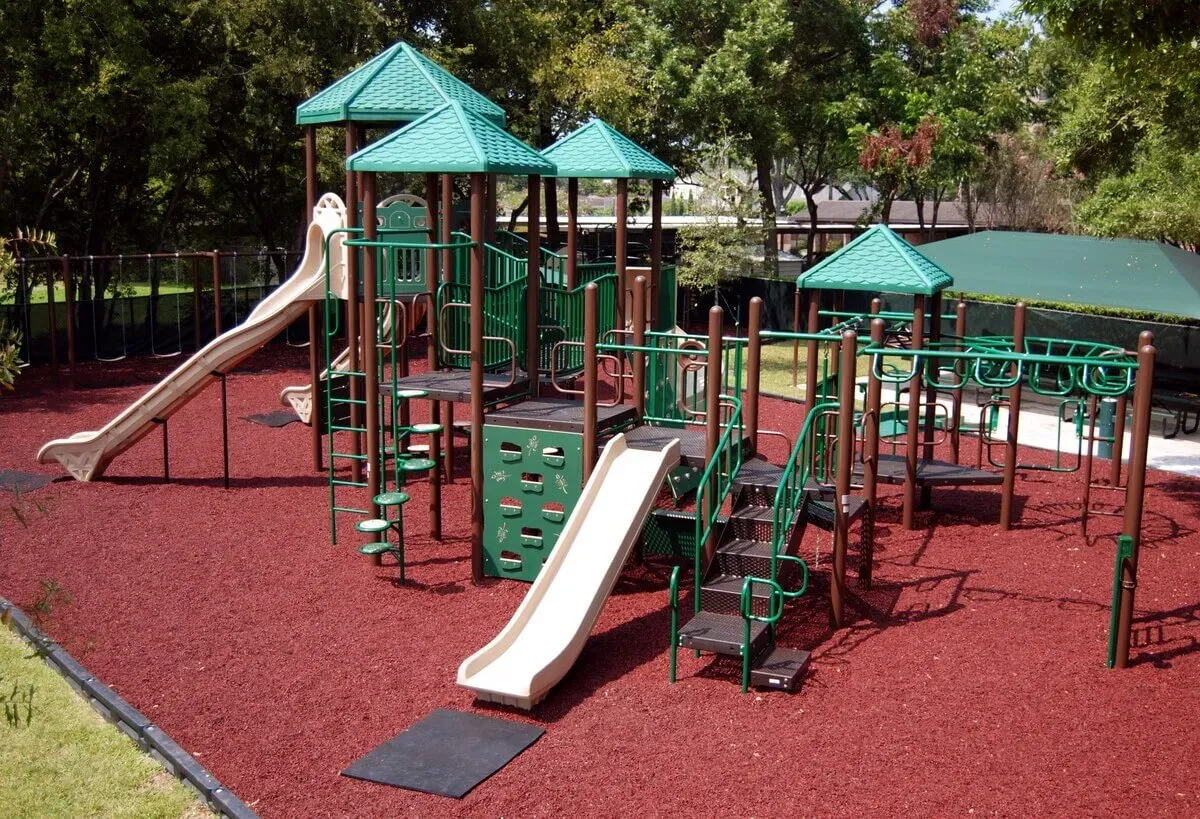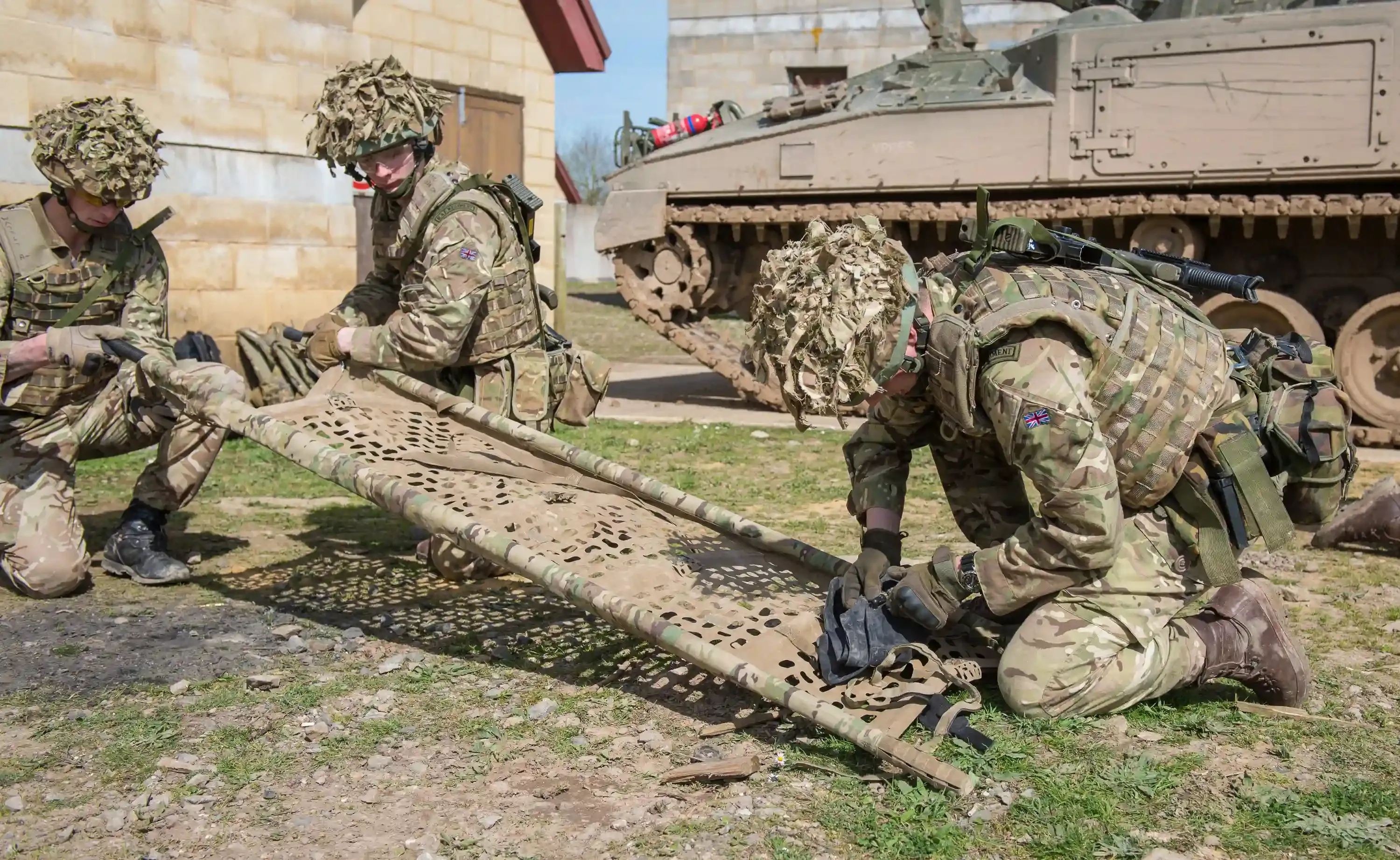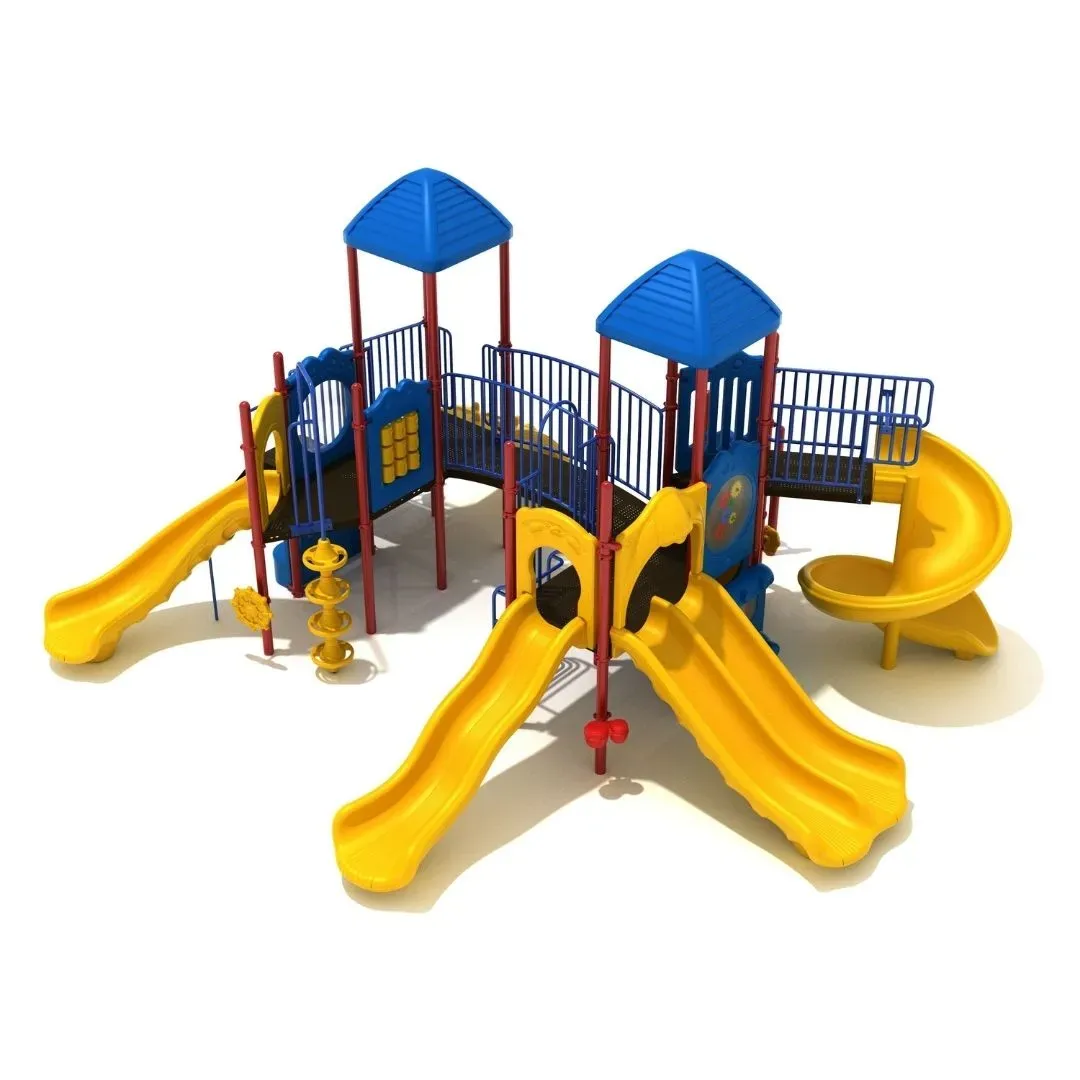Table of Contents
So, you're thinking about putting together a public play space? Maybe for a park, a school, or a community center? It's more than just dropping a few pieces of metal and plastic onto some dirt. Getting the right commercial play area equipment is a serious undertaking, one that impacts safety, fun, and frankly, your budget for years to come. Skip the homework, and you might end up with a space nobody uses, or worse, one that's a liability waiting to happen.
Understanding Commercial Play Area Equipment

Understanding Commercial Play Area Equipment
More Than Just Swings and Slides
So, you're looking into commercial play area equipment. Forget the flimsy plastic playsets you see in suburban backyards. We're talking about robust, built-to-last structures designed for constant use by hordes of energetic children. This isn't just about fun; it's about creating safe, stimulating environments in public parks, schools, daycare centers, and housing complexes. It involves everything from the main play structure – the centerpiece with its platforms, climbers, and slides – to freestanding elements like swings, merry-go-rounds, and spring riders. Think heavy-duty materials, stringent safety certifications, and designs meant to withstand weather, wear, and tear for years, not just seasons. Understanding commercial play area equipment means grasping this fundamental difference from residential gear.
Components and Considerations
It's a complex ecosystem of components. You have the main structures, often modular, allowing for customization and expansion. Then there are the individual pieces: various types of swings (belt swings, bucket swings for toddlers, tire swings), climbing walls, monkey bars, crawl tubes, balance beams, and spinners. Beyond the play gear itself, you need surfacing – the stuff under and around the equipment that absorbs impact and prevents serious injury. Wood chips, engineered wood fiber (EWF), rubber tiles, pour-in-place rubber, and sand are common options, each with its own pros and cons regarding cost, maintenance, and accessibility. Don't forget site furnishings either; benches, picnic tables, and trash receptacles are part of the overall picture.
- Main Play Structures (Platforms, Slides, Climbers)
- Swings (Belt, Bucket, Tire)
- Spinners and Merry-Go-Rounds
- Spring Riders
- Balance Beams and Steppers
- Climbing Walls and Nets
- Safety Surfacing (EWF, Rubber, Sand)
- Site Furnishings (Benches, Tables)
Why Commercial is Different
The leap from residential to commercial isn't just about size; it's about engineering, durability, and regulatory compliance. Commercial play area equipment must meet rigorous safety standards like those from ASTM and CPSC. This dictates everything from fall height requirements and spacing between components to the types of materials used and their load-bearing capacity. A piece of equipment designed for backyard use simply won't hold up under the constant, heavy use of a public park, nor will it typically meet the necessary safety benchmarks required by municipalities, schools, and insurance providers. Investing in proper commercial-grade equipment is a non-negotiable step if you're building a public play space that needs to be safe, compliant, and durable.
Safety Standards and Essential Gear for Play Areas

Safety Standards and Essential Gear for Play Areas
Why Standards Aren't Suggestions
Alright, let's talk safety, because nobody wants a lawsuit or, more importantly, an injured kid on their hands. When you're dealing with commercial play area equipment, safety standards aren't just guidelines; they are the law of the land, or at least the industry. We're talking about the heavy hitters: ASTM (American Society for Testing and Materials) and CPSC (Consumer Product Safety Commission). These folks set the benchmarks for everything from how far apart swings should be to the acceptable height of a slide platform before you need specific surfacing. Ignoring these isn't just risky; it's negligent. Manufacturers build equipment to meet these specs, and your installation needs to maintain them. It's the absolute bedrock of any public play space.
Beyond the Structure: Essential Safety Gear
Safety isn't just about the equipment itself; it's also about what's around and under it. Think of safety surfacing as the unsung hero of the playground. That fall from the monkey bars? It's a lot less likely to result in a broken bone if you land on 12 inches of engineered wood fiber rather than packed dirt or concrete. Different heights require different surfacing depths and types. You also need proper barriers and fencing if the playground is near hazards like roads or water. Adequate sightlines for supervision are critical too. Essential gear for play areas includes impact-absorbing surfaces, protective barriers, and even things like shade structures to prevent burns on hot metal slides.
Safety Standard Body | Focus |
|---|---|
ASTM International | Develops voluntary consensus standards for materials, products, systems, and services. |
CPSC (Consumer Product Safety Commission) | Government agency setting mandatory safety standards for consumer products. |
Common Hazards and How to Mitigate Them
So, what are we actually trying to prevent? Falls are number one, hence the obsession with surfacing and fall heights. Entrapment is another big one – making sure kids can't get their heads or limbs stuck in openings. Pinch points on moving parts? Absolutely critical to avoid. Sharp edges, tripping hazards, equipment that gets too hot in the sun – these are all things the standards address and that good commercial play area equipment design minimizes. Regular inspections and maintenance are your ongoing defense against wear and tear turning safe equipment into a hazard. It's a constant vigilance, not a one-time fix.
Designing Inclusive Spaces with Commercial Play Area Equipment

Designing Inclusive Spaces with Commercial Play Area Equipment
Play for Everyone: Beyond Just Ramps
Designing inclusive play areas isn't just about slapping a ramp onto a structure and calling it a day. That's like putting a single vegetarian option on a menu and claiming you cater to everyone. True inclusivity in commercial play area equipment means thinking about the whole spectrum of abilities – physical, sensory, cognitive, and social. It's about creating spaces where kids of all abilities can play *together*, not just alongside each other. This involves varying levels of challenge, different sensory experiences, quiet zones for kids who get overstimulated, and equipment that can be accessed and enjoyed in multiple ways. It's a fundamental shift from traditional playground design, recognizing that play is vital for every child's development.
Equipment That Bridges Gaps
So, what does this look like in practice? It means incorporating equipment like accessible swings (those with high backs and harnesses), ground-level play features that don't require transferring from a mobility device, sensory panels with textures, sounds, and visual elements, and wider pathways throughout the play space. Think about spinners that wheelchairs can access, or sand and water play tables at varying heights. Designing Inclusive Spaces with Commercial Play Area Equipment also involves creating clear sightlines for parents and caregivers supervising children with different needs and ensuring smooth, accessible safety surfacing connecting all areas. It's about intentional design choices that break down barriers, not just meet minimum requirements.
- Accessible Swings (Harness, High Back)
- Ground-Level Play Panels
- Sensory Play Features (Sound, Texture, Visual)
- Accessible Spinners/Merry-Go-Rounds
- Transfer Platforms and Ramps
- Wide, Accessible Pathways
- Varying Levels of Challenge and Engagement
Built Tough: Materials and Maintenance for Commercial Play Structures

Built Tough: Materials and Maintenance for Commercial Play Structures
Choosing Materials That Last
Look, building a commercial play space isn't like putting together IKEA furniture. The materials you choose for your commercial play area equipment are the backbone of the whole operation. They need to stand up to relentless sun, pouring rain, freezing temperatures, and the sheer, unadulterated chaos of dozens of kids climbing, swinging, and jumping on them day after day. We're primarily talking about heavy-gauge steel, often galvanized or powder-coated to fight rust like it owes it money, and durable plastics like rotationally molded polyethylene, which resists fading and cracking better than cheap stuff. Wood is sometimes used, but it requires significant ongoing maintenance to prevent splintering, rot, and insect infestation. The point is, you want materials designed for high-traffic, outdoor environments, not backyard barbecues.
The Crucial Role of Regular Inspections
Think of playground inspections like going to the dentist – nobody *loves* it, but skipping it guarantees pain down the road. Regular checks are non-negotiable for any commercial play area equipment. You need to spot potential hazards *before* they cause an injury. This means looking for loose bolts, cracked plastics, splintered wood, worn swings, damaged surfacing, and anything that looks out of place or broken. A quick visual sweep daily is wise, but you need more detailed inspections weekly or monthly, and a professional safety audit at least once a year. Document everything you find – it's your proof you're being diligent, which matters if something goes wrong.
- Check for loose bolts and fasteners.
- Inspect plastic components for cracks or fading.
- Look for splintering or rot in wood elements.
- Assess wear and tear on swing chains and seats.
- Verify safety surfacing depth and condition.
- Scan for tripping hazards or debris.
- Ensure moving parts are functioning correctly and safely.
- Check for rust or corrosion on metal parts.
Proactive Maintenance Saves Headaches (and Money)
Maintenance isn't just fixing things when they break; it's actively preventing them from breaking in the first place. It's tightening those slightly loose bolts before they disappear, cleaning off grime and graffiti before they become permanent stains, and topping up that safety surfacing before it's too thin to cushion a fall. Ignoring small issues on your commercial play area equipment is a fast track to expensive repairs or even needing to replace entire components prematurely. A little bit of regular care – following the manufacturer's guidelines, keeping a maintenance log, and addressing minor wear and tear promptly – goes a long way in extending the life of your investment and keeping the play space safe for everyone.
Selecting the Best Commercial Play Area Equipment for Your Needs

Selecting the Best Commercial Play Area Equipment for Your Needs
Know Your Audience and Site
Alright, so you're ready to pick out the actual gear. Before you get dazzled by shiny slides and elaborate climbers, take a step back and figure out who this play space is actually for. Are you designing for toddlers who are just finding their feet, or older kids who need challenging climbing structures and faster slides? Maybe it's a space for mixed ages? The age range of the primary users dictates the type of commercial play area equipment you should even consider. A park in a retirement community might need different equipment than one next to an elementary school. Also, look at your site itself. Is it flat or sloped? How much space do you actually have? Are there natural features you can incorporate, like trees for shade or small hills? Understanding your specific community and the physical constraints (or opportunities) of the location is the absolutely critical first step in selecting the right commercial play area equipment.
Budget Realities and Long-Term Costs
Let's talk money, because nobody has an unlimited budget, especially for public projects. Commercial play area equipment isn't cheap, and the sticker price is just the beginning. You also need to factor in installation costs, which can be significant depending on the complexity of the design and site preparation needed. Then there's the safety surfacing – remember that crucial layer? It's a major expense upfront and requires ongoing maintenance, like topping up engineered wood fiber or repairing rubber surfaces. Think about the long haul: what's the warranty on the equipment? What are the projected maintenance costs over its lifespan? Cheaper equipment upfront might end up costing you far more in repairs and replacement down the road. Get quotes from multiple reputable suppliers, compare not just prices but warranties and material quality when selecting your commercial play area equipment.
- Define the primary age range of users.
- Assess the size and topography of the site.
- Consider existing site features (shade, access).
- Determine your total budget, including installation and surfacing.
- Factor in long-term maintenance costs.
- Compare warranties and material quality between suppliers.
Making Smart Choices for Commercial Play Areas
So, we've covered the ground: from the nuts and bolts of what commercial play area equipment actually is, through the critical layers of safety standards, the necessity of true inclusivity, and the reality of materials and upkeep. Building a public play space isn't a weekend DIY project. It requires careful planning, a firm grasp of regulations, and a commitment to creating something durable and accessible. Don't get swayed by glossy brochures promising instant fun without the substance. The choices you make about your commercial play area equipment today determine its impact, its safety record, and its longevity tomorrow. Do the homework, invest wisely, and build a space that serves its purpose without becoming a headache down the line.